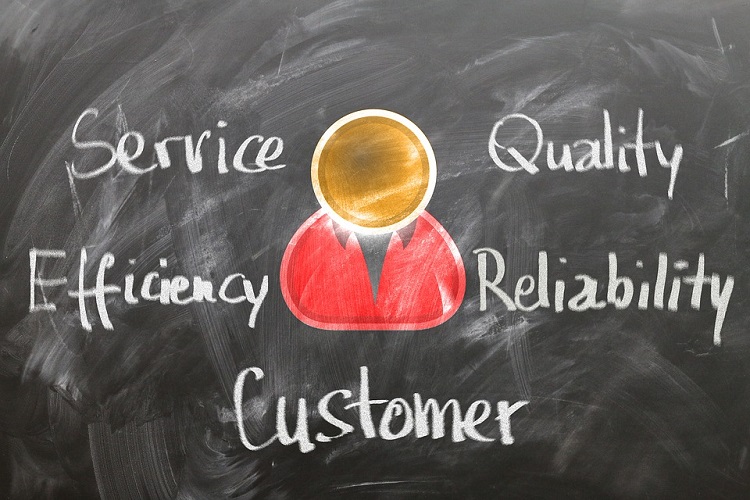When it comes to choosing a service provider, it’s tempting to go with the large, national companies that promise the world. But have you considered the benefits of choosing a service provider that is local to your area? In this article, we will explore the top five reasons why opting for a local service provider is a smart decision.
Reason #1: Personalised and customised service
Local service providers offer personalised and tailored solutions to meet your specific needs. They understand the local market and can offer recommendations and insights that national companies might overlook.
One of the advantages of choosing a local provider is their ability to understand the unique requirements of the community in which you live in. They are familiar with the culture, preferences, and trends. This knowledge allows them to offer personalised services that are specifically tailored to meet the needs of their customers.
In addition, local providers have the flexibility to customise their services based on individual preferences. They take the time to understand your requirements and can make adjustments to their offerings accordingly. This level of personalisation ensures that you receive a service that truly meets your expectations and delivers the desired results.
Choosing a local service provider means you are not just another customer to them. They value the relationship and are committed to providing you with the best possible service. With a personalised and customised approach, you can be confident that your needs will be met and your expectations exceeded.
Reason #2: Supporting the local economy
By choosing local, you are supporting your community’s economy and small businesses, which helps create jobs and boost local businesses. L
L
Local business owner
When you opt for a local provider, you are not only investing in the service you need but also in the economic growth of your community. By supporting local businesses, you are helping to create jobs and stimulate the local economy.
Local service providers are often small businesses that rely on the support of their community to thrive. When you choose them over larger national companies, you are helping to ensure the survival and success of these local businesses. This, in turn, leads to the creation of more job opportunities and a stronger local economy.
Furthermore, supporting local businesses promotes diversity and uniqueness within the community. Local service providers often offer specialised services or products that are unique to the area. By choosing these providers, you are encouraging the preservation of traditions, culture, and expertise.
So, the next time you need a service, consider the impact your choice can have on the local economy. By supporting local businesses, you are making a positive contribution to your community and helping it thrive.
Reason #3: Quick response and availability
Local service providers often have faster response times and can provide more personalised customer service. They are just a phone call away and can quickly address any concerns you may have.
One of the frustrations of dealing with large national companies is the lack of personal attention and delayed response times. When you have an issue or a question, you want it resolved quickly and efficiently. This is where local providers shine.
Local providers are known for their prompt response times and availability. They understand the importance of addressing customer concerns in a timely manner. With a local service provider, you can expect a quick response to your inquiries and prompt resolution of any issues that may arise.
In addition, local providers are more likely to offer personalised customer service. They take the time to listen to your needs and concerns and provide tailored solutions. This level of attentiveness and care ensures that you receive the support and assistance you need, when you need it.
Choosing a service provider that is local means you can count on their responsiveness and availability. You won’t have to wait for hours on hold or deal with automated systems. Instead, you’ll have direct access to a friendly and knowledgeable team that is dedicated to providing you with the best possible service.
Reason #4: Better understanding of local regulations and requirements
Local providers often have a more in-depth knowledge of the area and can leverage their connections to provide better products and services.
Every region has its own set of regulations, requirements, and specificities that need to be taken into consideration when providing services. Local service providers have the advantage of being familiar with these local nuances.
Local providers understand the local regulations and requirements that govern their industry. They have experience navigating the local landscape and can ensure that their services comply with all relevant laws and regulations. This level of expertise gives them an edge over national companies that may not have the same level of understanding and familiarity with local requirements.
Furthermore, local service providers often have established relationships and connections within the community. These connections can be leveraged to provide better products and services to their customers. Whether it’s sourcing local materials or collaborating with other local businesses, local providers have the ability to tap into these networks to deliver superior quality and value.
By choosing a local provider, you can benefit from their knowledge and connections. You can be confident that they understand the local landscape and can provide you with the best possible service that meets all local regulations and requirements.
Reason #5: Building strong relationships and trust
By choosing a local provider, you are contributing to a greener and more sustainable future by minimising transportation and reducing carbon emissions.
Local exchange of goods
One of the advantages of choosing a local provider is the opportunity to build strong relationships and trust. Local providers value their customers and prioritise building long-term relationships based on trust and mutual respect.
With a service provider, that is local to you, you are not just a transaction. They take the time to get to know you and understand your needs and preferences. This level of personal connection fosters trust and loyalty between the provider and the customer.
Building a strong relationship with a service provider that is local, means you can rely on them for all your future needs. They become your go-to provider, and you can trust that they will always deliver the same level of quality and service.
In addition, local providers often have a strong reputation within the community. They rely on word-of-mouth referrals and positive reviews to grow their business. This means that they have a vested interest in providing exceptional service and ensuring customer satisfaction.
By choosing a local service provider, you are not only investing in the service itself but also in the relationship and trust that comes with it. You can be confident that you will receive reliable and trustworthy service from a provider who genuinely cares about your satisfaction.
How to find and choose a reliable local service provider
Finding and choosing a reliable service provider can be a daunting task, especially with so many options available. Here are a few tips to help you make the right choice:
1. Research: Start by researching local service providers in your area. Look for companies that have a good reputation and positive reviews. 
Local Business Search with Usayso
2. Ask for recommendations: Reach out to friends, family, and neighbors who have used local service providers. Ask for their recommendations and experiences.
3. Check credentials and certifications: Ensure that the provider has the necessary licenses and certifications to operate in your area. Including that your intended service professional has a registered business, through an ABN (Australian Business Number) search. This will give you peace of mind knowing that they meet the required standards.
4. Request references: Ask the provider for references from past clients. Contact these references to get a better understanding of their experience with the provider.
5. Compare quotes: Obtain quotes from multiple local service providers. Compare the prices, services offered, and additional benefits to make an informed decision.
6. Meet in person: Whenever possible, schedule a meeting with the provider to discuss your needs and expectations. This will give you an opportunity to gauge their professionalism and determine if they are the right fit for your requirements.
7. Read the contract: Before signing any agreement, carefully read through the terms and conditions. Ensure that you understand all the details and ask for clarification if needed.
By following these steps, you can increase your chances of finding a reliable local service provider who can meet your needs and deliver exceptional service.
Common misconceptions about choosing local service providers
Despite the numerous benefits, there are some common misconceptions about choosing local service providers. Let’s debunk a few of these misconceptions:
1. Limited resources: Some people may believe that local service providers have limited resources compared to larger national companies. However, local providers often have access to the same resources as their larger counterparts. They have established relationships with suppliers and can leverage their connections to deliver high-quality services.
2. Lack of expertise: Another misconception is that local providers may lack the expertise and experience of larger companies. In reality, many local service providers have years of experience and are highly skilled in their respective fields. They often have a deep understanding of the local market and can provide specialised services that meet the unique needs of their customers.
3. Higher costs: It is a common misconception that service providers that are local, are more expensive than national companies. While pricing can vary depending on the service and the provider, local companies often offer competitive rates. In addition, the personalised service and attention to detail provided by local providers can often justify the slightly higher cost.
4. Limited service offerings: Some people may assume that just because its a local provider, they have limited service offerings compared to national companies. However, many local providers offer a wide range of services that cater to various needs. Whether it’s home services, professional services, or specialised services, local providers can often meet diverse requirements.
By debunking these misconceptions, it becomes clear that choosing a local service provider is a smart decision that offers numerous advantages.
Conclusion: Making the smart decision to choose local service
In conclusion, choosing a local service provider offers a host of benefits that can enhance your overall experience. From personalised and customised service to supporting the local economy, local providers have a lot to offer.
With faster response times, better understanding of local regulations, and the ability to build strong relationships and trust, local providers are often the preferred choice for many individuals and businesses.
By prioritising service providers local to you, you are not only investing in the service you need but also in the economic growth of your community. You are supporting local businesses, creating jobs, and contributing to a sustainable future.
So the next time you need a service provider, consider going local. It’s a smart decision that benefits you and your community. Choose local, and experience the personalised service, prompt response times, and exceptional quality that only local service providers can deliver.




